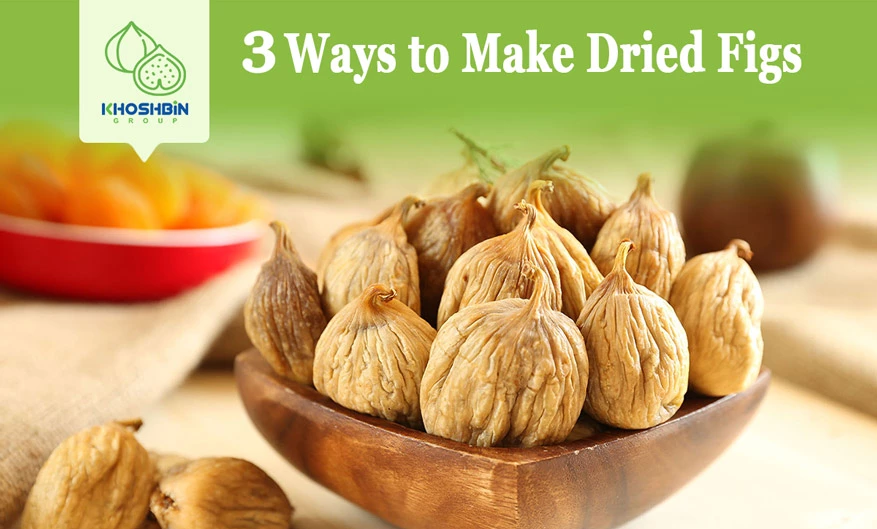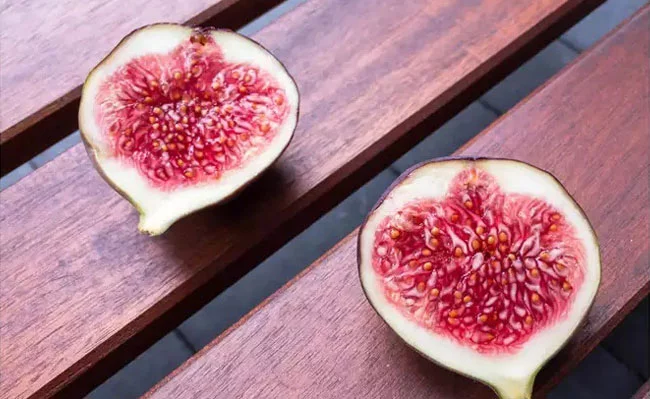Blog
3 Ways to Make Dried Figs

Fresh figs are found limitedly in local markets because they are so perishable. One way to enjoy their delectable taste all year round is to dry them efficiently. Drying helps you to preserve their flavor and goodness for longer and as naturally as possible.
This article teaches you how to make dried figs (a type of dried fruit) in three different ways to obtain figs that are closer to their fresh forms and imperishable.
Why Do We Dry Figs?
Drying is a great way of food preservation. Traditionally, fruits, including figs, were dried in the sun to make their storage easier while increasing their longevity. This was how people produced travel food in ancient civilizations. Travelers were confident they wouldn’t starve miles from home.
Nowadays, we mostly make dried figs to preserve their taste and enjoy them in the off-season. Another reason for drying figs is to enhance their taste or nutrient composition. Figs become sweeter when they dry.
What You Need to Know Before Drying Figs
The process of making dried figs requires careful selection. Before getting started on your drying task, there are several dos and don’ts to consider that may help you get superior results. These include;
Pick the Right Figs
Pick figs at the right ripening point. That is when figs are neither too soft nor too hard.
Cut the Figs in half
This is to make sure you achieve a more unified drying point. Also, it is much more convenient to stuff them with almonds or walnuts if you like. It is possible to dry whole fruits, but you may need a longer time for drying, and the risk of remaining juice in the figs is higher.
Pick the Right Day
If you sun-dry your figs, pick a day when the air is not excessively humid. In this case, September is your best choice.
Blanch Fresh Figs
Blanching includes soaking fresh figs in a drying solution containing citric acid and water. Citric acid plays several functions in the drying solution. It helps preserve the quality of dried figs. It destroys potentially harmful microorganisms and slows the enzyme reactions that might continue during drying and storage. Citric acid also softens the cell structure, allowing the moisture to escape. So the fruit pieces dry faster.
Condition Dried Fig
Conditioning ensures that figs have dried properly. You can condition dried figs by packing them loosely in an air-tight glass or plastic container for several days. If condensation (water drops) forms inside the container, further dehydration is needed. Otherwise, they are ready to be packed and stored.
Common Ways to Make Dried Figs
There are three different methods for making dried figs at home or at a manufacturing site. These methods include the following:
![]() 1- Sun-drying
1- Sun-drying
![]() 2- Oven-drying
2- Oven-drying
![]() 3- Drying using a dehydrator
3- Drying using a dehydrator
Each method has its own weaknesses and strengths. There are many recipes for each method; each slightly different from the others. Here we discuss the more common ones that indeed bring you good results.
1- Making Dried Figs in the Sun
Homemade dried figs are usually produced in the sun. This is the simplest way to make dried figs at the convenience of your home. These are the steps:
- Wash the figs thoroughly but carefully so you avoid crushing them.
- Remove the stems, bruised parts, and any dirt or debris from the figs.
- Cut the figs in half using a kitchen knife (Optional). This makes sure they dry quickly and efficiently, and no juice will remain in the center after drying.
- Arrange the fig halves cut-side up in a single layer on a wooden rack or a wire rack covered with cheesecloth or a tea towel. A wooden rack or wire rack is better than pans or baking sheets with solid surfaces because it allows air to flow through.
- Place the wooden rack or wire rack in the sun (for example, on the balcony) for at least three days. Turn the fig halves 3-4 times during the day.
- Tuck the cheesecloth into the wooden racks or cover the racks with a net to stop insects from disturbing them.
- Bring the figs indoors at the end of the day as the evening humidity will lengthen their drying time.

When figs are done, they should be pliable (soft and chewy). No juice should flow out of them when squeezed or pressed between your fingers.
2-Making Dried Figs in the Oven
Oven-drying is an efficient way to dry figs at home on a small scale. The preparation process is the same as sun-drying, but drying occurs by placing the figs in an oven instead of the sun. These are the steps;
- Wash the figs carefully to eliminate any dirt or contamination on them.
- Remove their stem and cut off any bruised part using a sharp knife.
- Use the knife to cut the figs in half. (This step is optional, but it may help your figs to dry faster and evenly.)
- Arrange the fig halves cut-side up in a single layer on a baking sheet in a way that none of them is touching.
- Place the baking sheet in the oven set at 110 – 115 degrees Fahrenheit and leave the door slightly open to prevent moisture buildup.
- Leave the figs in the oven for about 10 to 12 hours. Check them regularly after 10 hours to see if they are done.

3-Making Dried Figs in a Dehydrator
Although making dried figs using the oven is fun, it is more efficient to use a dehydrator for this purpose. Electric tabletop dehydrators, for example, surpass ovens in several ways. Dehydrators keep the internal temperature steady, unlike ovens in which temperature tends to fluctuate. And they run at a comparatively low voltage, making them an energy-efficient option. Industrial dehydrators are more spacious than ovens, so you can dry larger amounts of fruits simultaneously.
The process of making dried figs using a dehydrator is similar to an oven. This is how we make dried figs using a dehydrator:
- Wash and dry the figs.
- Remove the stems, any bruised parts and debris, and cut the figs in half (optional).
- Place the fig halves cut-side up in a single layer on dehydrator racks (figure 1). Leave space between them. They should not be touching.
- Place them in a dehydrator at 135 degrees Fahrenheit or fruit setting for 6 to 8 hours or until they are completely dry on the touch.
- Check from time to time and turn on the other side for even drying.
Are they too high in natural sugar, and are they suitable for people with diabetes?
Dry figs are naturally sweet and contain a high amount of natural sugars, mainly glucose and fructose.
A serving of 3–4 figs typically provides around 70–80 calories, making them an energy-dense snack.
While they are healthier than refined sugar, overconsumption can contribute to weight gain.
People with diabetes or on calorie-restricted diets should enjoy them in moderation.
Conclusion
Drying is an excellent way to preserve foods, especially perishable fruits such as figs. There are three common ways to make dried figs: sun-drying, oven drying, and drying in a dehydrator. Dried figs are usually made in the sun or in an oven on a small scale. Large-scale drying of figs is done in large dehydrators for industrial purposes.
Do you dry figs usually? How do you normally dry figs? Tell us about your experience.
Write your comments in the comment section below.
FAQ
Thanks, this was a very informative article. What is the recommendation for the ratio of citric acid to water? I have read that commercial producers steam or pressure cook figs after drying or soak them in a set solution. Is there a reader out there who knows anything about this?
Most ovens don’t go down to 110 to 115 degrees. I had to dehydrate my figs at 170 degrees, that was the lowest setting the Oven Convection mode would go. The next year I tried a dehydrator at 158 degrees, and apparently, even though I dried them 10 hours, plus a couple more hours at 98 degrees to cool them down, and then a couple more hours for air drying, they have been a disaster. The Figs did not dry adequately. My figs from the Oven came out spectacular but it took forever for the sugar to form on the outside. So I am not sure what to do for year three.
You need to proof read before you send your posts